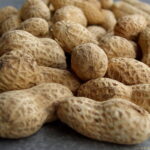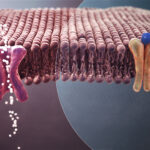Tackling Toxicity: What Do We Know About Cholera?
X-rays reveal how cholera bacteria from contaminated food and water effectively survives in the human gut.
By Sourav Agrawal
Recent work by scientists has shed light on how the bacteria that causes cholera can manage to survive in harsh environments in our stomachs. This has given us previously unknown insights into an important step of the disease’s progression and could help in developing new treatment methods.
The blue death
Cholera, also known as the blue death, is a deadly diarrheal disease that can kill within hours if not treated. Cholera rates are also on the rise globally. In 2022, according to the World Health Organization (WHO), cholera cases or outbreaks affected 30 countries spread across five of the six WHO regions. In addition, many countries reported higher death rates in 2022 than in previous outbreaks. This continues the upward trend of 2021, when 23 countries reported cases or outbreaks. The average cholera death rate reported in 2021 was about 2 in every 100 infected (3 in every 100 infected in Africa). This is the highest fatality rate recorded in over a decade. This increasing frequency of outbreaks could be addressed with better prevention and treatment methods. Developing such methods requires an in-depth knowledge of the disease and how it affects our bodies.
Surviving in toxic human gut
Cholera is caused by a bacteria known as Vibrio cholerae. It is a waterborne disease that spreads through contaminated water and food. One of the crucial steps in the disease’s progression is the bacteria surviving through a harsh environment in the human gut (which has an acidic environment to digest food). As soon as the bacteria reaches the human gut, it senses the harsh environment and produces molecules to protect itself from this environment. How exactly it is able to quickly sense this change in environment and signal the production of molecules is something that has intrigued scientists for a very long time.
RELATED: How Nonsugar Sweeteners Affect Gut Health
Cholera has specific molecules known as proteins that help in transferring this message of environment change to quickly start the protection process. Proteins are biological molecules that perform all functions that are essential for survival of an organism. The specific protein that helps in transferring this message is known as ToxR. Now, this ToxR protein not only has to take the message of this environmental change, but also deliver it where it needs to go to start the bacteria’s response. It does so by binding to the bacteria’s DNA at the right place to send a signal to start producing these protection molecules (such as another protein known as OmpU). But bacteria have extremely long DNAs. How can this molecule know which exact place it needs to go to deliver the message?
Interestingly, they do so in a very similar way to how we deliver our messages through letters. Like our letters have a destination address, many of these proteins have a specific DNA address where they go to bind and deliver the message. DNA is basically a biomolecule made by continuous attached strings of individual molecules. They form a particular unique order of these individual molecules, which is then recognized by proteins like ToxR to deliver this message. But, ToxR needs to bind multiple of these unique orders to start the complete response. But scientists had incomplete knowledge of how exactly it manages to bind multiple of these unique orders of DNA so specifically.
Visualizing the protein-DNA complex
Therefore, scientists from IRB Barcelona, CSIC, and the University of Detroit Mercy completed a recent study using specialized X-ray diffraction techniques to visualize these small biomolecules and get an image of this ToxR bound to DNA particles. X-rays are strong, powerful rays that can penetrate deep inside the molecules and interact with their constituent atoms to give us an image of the molecules based on how they react to those atoms. The scientists used these images to gain new insights into how ToxR recognizes which area of DNA it needs to bind to in order to deliver the message and how exactly it binds to DNA.
RELATED: Learn more about citizen science projects that collect data on different types of DNA
Uncovering mysteries of ToxR-DNA interaction
The researchers found that around four of these ToxR molecules bind to a continuous long region of DNA. But none of these ToxR individual proteins bind to the same order of DNA. In other words, there is no consensus order or “specific address” that it can recognize. But they found that it was constantly binding to DNA regions that have similar shapes to one another. Instead of the order of DNA, it was the shape of the DNA molecule that determined recognition and binding of ToxR to that particular region of DNA. You can imagine it as if we instruct the mail carrier to deliver a letter to every triangular mailbox in an area and leave out the rest. So, in spite of the specific address, the mail carrier would use the shape of the mailbox to determine where it needs to deliver the message. This would make it possible to deliver the message to multiple locations having distinct unique addresses. Similarly, this recognition mechanism allows ToxR to bind many regions of DNA having distinct orders but same shape and start production of protection molecules.
The researchers have also found possible mechanisms for how this binding of ToxR to specific DNA regions could result in production of more protection molecules. They hypothesized that this is due to ToxR proteins displacing H-NS proteins bound to those DNA regions (similar proteins delivering opposite messages) and paving the way for RNA polymerase to work on that DNA region. RNA polymerase is the molecular machine responsible for reading the DNA region and producing proteins based on that DNA region.
Looking to cholera mitigation in the future
Researchers now have more insights into how ToxR protein helps Vibrio cholerae to adjust to the harsh human gut environment, helping us to understand this crucial disease-causing step in great detail. This knowledge can help us better understand molecular mechanisms that cause cholera and make us better prepared for future cholera outbreaks.
This study was published in the journal Proceedings of the National Academy of Sciences (PNAS).
References
Canals, A., Pieretti, S., Muriel-Masanes, M., El Yaman, N., Plecha, S. C., Thomson, J. J., Fàbrega-Ferrer, M., Pérez-Luque, R., Krukonis, E. S., & Coll, M. (2023). ToxR activates the Vibrio cholerae virulence genes by tethering DNA to the membrane through versatile binding to multiple sites. Proceedings of the National Academy of Sciences of the United States of America, 120(29), e2304378120. https://doi.org/10.1073/pnas.2304378120
World Health Organization. (2022, March 30). Cholera. https://www.who.int/news-room/fact-sheets/detail/cholera
World Health Organization. (2023, February 11). Cholera – Global situation. https://www.who.int/emergencies/disease-outbreak-news/item/2023-DON437


About the Author
Sourav Agrawal is a graduate student at University of Wisconsin–Madison. He loves cooking and trying new dishes. Sourav is passionate about discussing science and wants to communicate science in his local language (Odia). Follow Sourav on Twitter @sour_agrawal.




